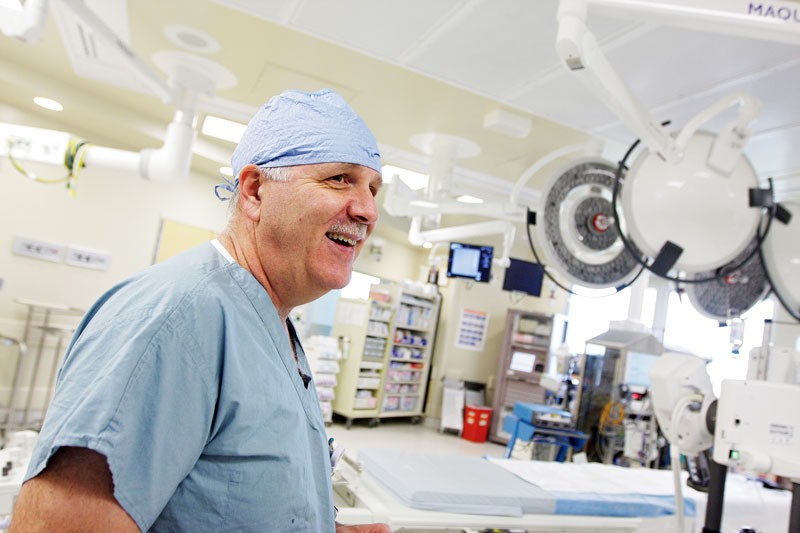
Sally Strauss has had a busy 86 years. She raised two sons and was active in philanthropy for hospitals in the San Francisco Bay area before eventually moving to Spokane. During those hectic years, she didn’t notice that plaque was building up in her heart’s aortic valve.
“All of a sudden, I couldn’t breathe,” Strauss says. “I was gasping, I was surprised.”
She was rushed to the emergency room, where she was diagnosed with aortic valve stenosis (also called aortic stenosis). Strauss’s aortic valve was almost closed, compromising her circulation.
Open-heart surgery is the most common solution to this type of problem, but for Strauss, that wasn’t an option.
“The doctor said to me that he would never do open heart surgery on me because I would never survive,” Strauss says.
Instead, they proposed Strauss take part in a study involving replacement of the clogged valve with an artificial valve that would be inserted through the groin and guided by wire to the heart. The valve would be replaced, and no open-heart surgery would be required.
It worked. Strauss is one of five patients who have had the surgery performed at Providence Sacred Heart Medical Center, and she says she was able to leave the hospital after five days of recovery.
Sacred Heart is one of 40 hospitals in the United States taking part in clinical trials for the MedTronic Corevalve, and it is the only participant in the Northwest. The device has been available in Europe since 2007, but it needs to be approved by the Food and Drug Administration before it can be used in the United States.
Aortic valve stenosis happens when the area around the aortic valve becomes calcified, says Leland Sewick, the principal surgeon in the trial. The calcification is a consequence of age.
“There doesn’t seem to be any way to prevent it, other than not living long enough for it to happen,” Sewick says. “As people get older, we’re seeing of course more and more of it.”
In many cases, patients know that they have a problem, such as a heart murmur that could turn into aortic stenosis, Sewick says. The problem is that the condition can only be addressed once symptoms start to show.
Once patients become symptomatic, Sewick says their chances of living more than five years are less than 50 percent.
The traditional fix is open-heart surgery, requiring opening up the chest, stopping the heart and putting the patient on a heart-lung machine while surgeons repair the valve.
The catch is that by the time aortic stenosis becomes symptomatic, patients are usually old and may have pre-existing conditions that would prevent them from undergoing an open-heart procedure, says Michael Ring, a cardiologist at Providence Sacred Heart Medical Center in Spokane. About one-third of the approximately 100,000 people diagnosed in the U.S. with aortic stenosis cannot be operated on.
“This trial is aimed at patients at high-risk for conventional surgery,” says Sewick.
A big window overlooks the city of Spokane, and eight monitors hover overhead in the brightly lit surgical suite at Sacred Heart. An anesthetized patient is wheeled in. The surgeon makes a three to four-inch incision near the groin and inserts a catheter. Wires guide a new heart valve to its destination — from the leg, up through the aorta, and finally to its resting place in the heart.
Webbing crafted from super-elastic nitinol, a nickel-titanium alloy, surrounds the pig tissue that makes up the actual artificial valve. It expands once the valve is properly positioned in the heart, holding it securely in place.
Ring says this whole process takes about two hours.
Sacred Heart began the trial last June, and Sewick says the plan is to operate on upwards of 50 people before the trial ends at some point next year. The youngest selected was 79, while the oldest was 92.
John Schau, 79, has undergone both open-heart surgery and the Corevalve procedure. He still remembers the pain and long recovery of openheart surgery.
“It was 30 days anyway before you can move your arms at all,” Schau says. “It’s extremely painful, and [Corevalve surgery] is not painful.”
Just five days after the Corevalve surgery in late June, Schau says he was still feeling a bit weak. But that didn’t stop him from climbing back behind the wheel of his car to resume work at his sales job.















